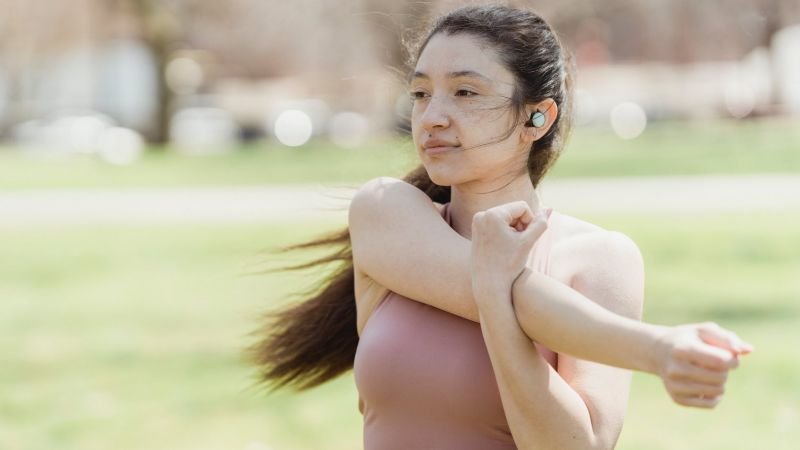All of us stretch in the morning to get our blood flowing, all of us stretch after a long drive, and all of us stretch after sitting at our desks for hours. Animals and humans both stretch intuitively.
Our bodies benefit from stretching because it loosens our muscles and revitalizes our bodies.
Stretching is Beneficial for Everyone


You don’t have to be an athlete or yogi to stretch. Performing a few stretches every day will improve flexibility and range of motion.
Exercise for mobility is especially important for people who have sedentary lifestyles. Because sedentary individuals don’t get used to sudden or jerky movements, they tend to suffer injuries more frequently.
As a result, muscle strains can further hinder exercise, perpetuating a cycle of inactivity and leading to further mobility declines.
With age, our muscle mass naturally declines and our activity levels decrease. Joints become stiff and muscles weaken as we age. By stretching, we can slow down the aging process. Stretching is a great way to improve your fitness, agility, and mobility, regardless of how old you are or how athletic you are.
Better Health
In addition to improving agility and flexibility, stretching relieves stress, reduces back pain, and improves posture. Recent studies have shown that stretching has conflicting benefits, so stretching has taken a backseat to other exercises.
Don’t let that discourage you, most of those studies simply discuss the relative benefits of stretching before or after a workout. Overall, stretching is an excellent form of exercise.
Muscle Flexibility
Flexibility and joint health are the most obvious benefits of regular stretches. In addition to improving your athletic agility, stretching can help you perform everyday tasks, such as bending down to pick up something off the ground. An agile individual can more easily perform such basic movements, which results in less fatigue and better stamina.
Reducing Injury Risk
Muscle tension can be harmful to your health. In case your muscles are stiff, you are more prone to pulling a muscle or spraining a ligament when you perform a new exercise or suddenly increase your level of activity.
You are less likely to suffer an injury by overextending your muscles if your body is accustomed to elongating your muscles.
Enhance Your Workouts
A dynamic stretch prior to starting an intense workout (such as running in place) will allow your muscles to warm up and your body to prepare for strenuous activity.
As you cool down after a workout, static stretches (poses which remain stationary, such as a lunge) may help to minimize muscle soreness by stretching muscles that have contracted during your workout.
As well as keeping your blood flowing, static stretching allows more nutrients to flush through tired muscles and promotes cell growth and repair.
Reduce Stress
A person’s body is often negatively affected by the pressures of daily life. Chronic tension can result in knotted muscles in the neck, shoulders, lower back, and hips when you are constantly in fight-or-flight mode. Aches and pains may result in these classic areas of stress.
If you stretch out the areas where you tend to hold tension, you will be able to relieve pain.
A Mood Boost
Exercise releases chemicals in your body that elevate your mood, such as endorphins. Stretching triggers these mood-enhancing chemicals just like all forms of exercise.
By performing stretches calmly and thoughtfully, you also teach the body to slow down and relax. When you try to loosen and extend your muscles, your breathing rate naturally decreases.
Deep, slow breathing also increases your oxygen intake, enhancing your sense of relaxation.
Align Your Spine
The best way to reduce back pain is to maintain good posture. In order to improve your posture and feel more balanced, stretch the muscles along your spine and your legs.
Also Read: Best Yoga Poses for Good Posture
Types of Stretching
There are many stretching methods out there, so don’t get confused! In general, stretches can either be static or dynamic, and they can be active or passive. Many stretching techniques simply modify these basic techniques.
Stretching: Dynamic vs. Static
Stretching may come to mind when we think of simple stretches, like bending forward to touch our toes – this is a static stretch.
During static stretching, a muscle, or a group of muscles, are held in a position that elongates them for a period of time, usually thirty seconds. (Don’t bounce! That’s ballistic stretching, which has been largely discredited.)
To achieve the most benefit from a static stretch, you should hold the pose long enough for your body to overcome the “stretch reflex”, which is designed to prevent your muscles from becoming too stretched.
Your muscles should relax into a deeper stretch after about 20 seconds of stretching. Over time, your muscles adapt to the new lengthening and you become more flexible.
Stretching that combines movement with stretch is called dynamic stretching. For example, you might jog in place for 30 seconds before a brisk run, or swing your arms in circles before playing tennis, rather than bending forward to touch your toes for 30 seconds.
Stretching Actively vs. Passively
It is also important to note whether stretches are passive (unassisted) or active (assisted). Performing an active stretch without any equipment or a training partner is an example: holding an arm overhead and extending it overhead unassisted.
In contrast, passive stretching includes pressure that exerts pressure on the muscles in order to achieve a deeper stretch. Therefore, you are using both arms for additional force if you clasp your hands and extend your arms overhead.
Final Words
If you perform stretching exercises daily, you will get the greatest results. Switch between different areas of the body each day, and follow this order of stretching: Stretch your back and obliques, then your calves and glutes, then your hamstrings; and stretch your arms and chest last.
Also Read:




